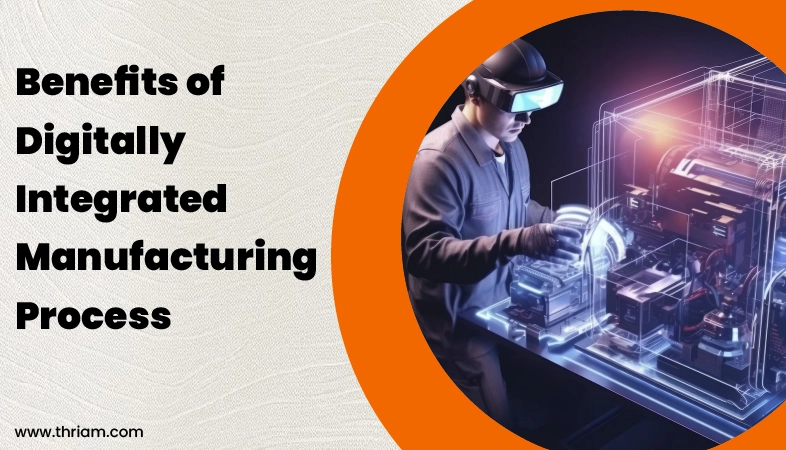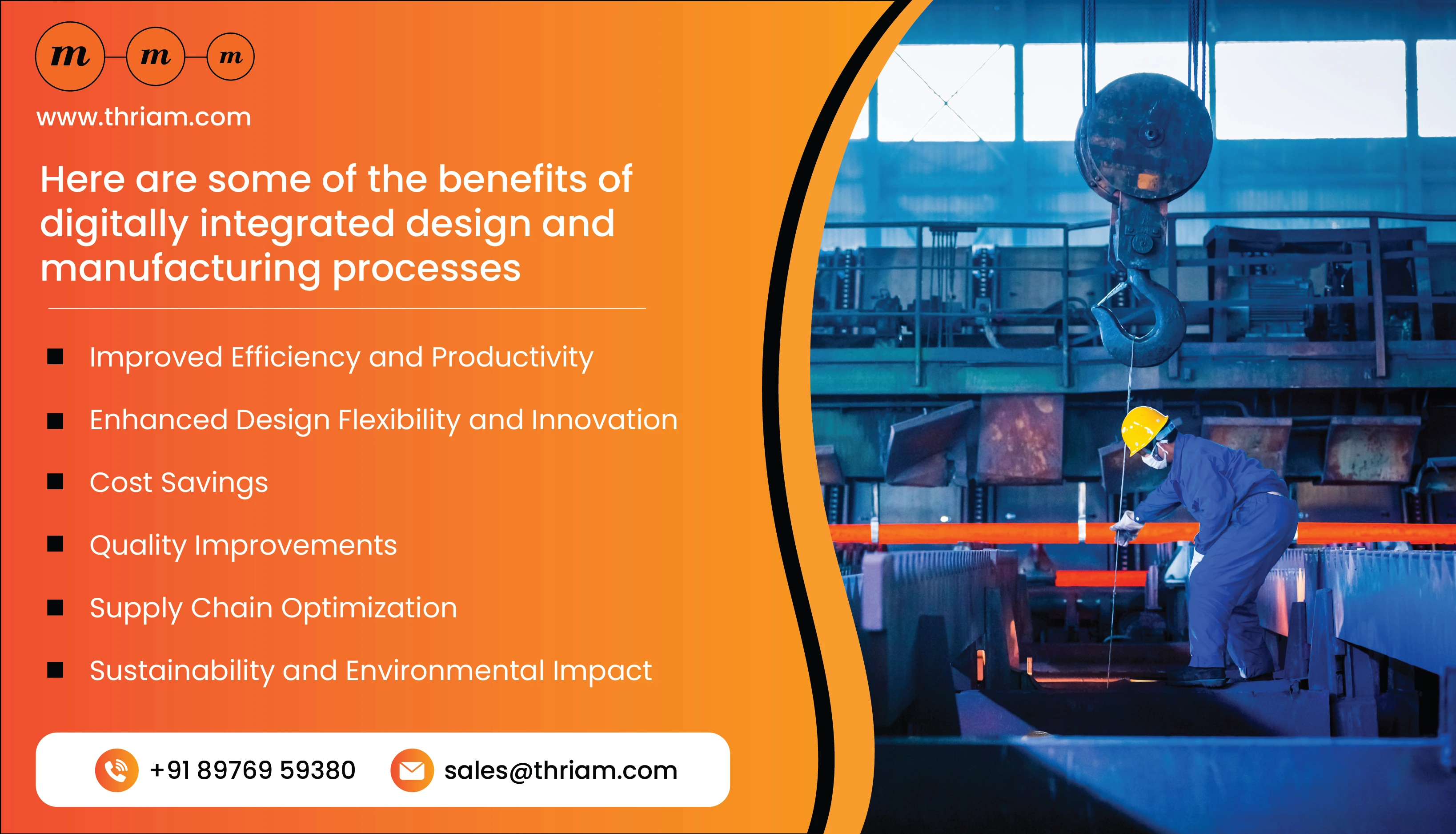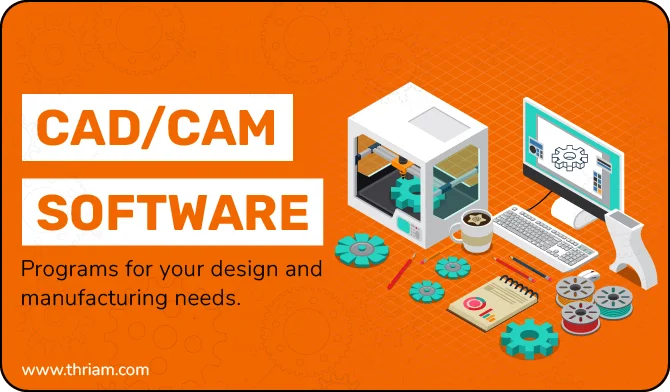Unlocking manufacturing success: The Transformative Benefits of Digitally Integrated Design and Manufacturing Processes

Digitally integrated design and manufacturing processes refer to the seamless integration of digital tools, technologies, and data throughout the entire product development and production cycle. It involves the use of computer-aided design (CAD) software, computer-aided manufacturing (CAM) systems, data analytics, automation, and virtual prototyping to optimize and streamline the design and manufacturing workflows.
In digitally integrated design and manufacturing processes, design teams and manufacturers collaborate closely, sharing and working on data in real-time. This enables efficient communication, rapid iterations, and eliminates the need for manual handoffs and physical prototypes.
With digital integration, manufacturers can simulate and optimize designs before production, reducing errors, and minimizing rework. Designers can explore complex geometries and iterate on designs quickly, enabling greater design flexibility and innovation.
Moreover, digital integration offers benefits beyond design, extending to the manufacturing process itself. Real-time data analytics and monitoring during manufacturing improve quality control, detect defects early, and enable continuous improvement. Supply chain integration ensures seamless coordination between suppliers, reducing lead times and overall costs.
Here are some of the benefits of digitally integrated design and manufacturing processes:

Improved Efficiency and Productivity
Digitally integrated design and manufacturing processes offer considerable improvements in efficiency and productivity. With the aid of digital tools, design and manufacturing teams can easily communicate, collaborate and share data in real-time, thus helping to accelerate the development cycle and reduce time-to-market.
Additionally, digital simulations and virtual prototyping allow teams to identify potential design flaws and manufacturing defects early on in the design phase, minimizing errors and rework. The end result is a faster development cycle, reduced costs and improved efficiency.
Enhanced Design Flexibility and Innovation
Digitally integrated design and manufacturing processes maximize design flexibility and innovation. With digital tools, designers can optimize designs and iterate on them in real-time without any limitations. As a result, products can be developed much faster, and with a higher level of customization and personalization.
Iterative design processes made possible by digital integration unlock limitless possibilities for designers, making it easier to bring innovative, new and complex product designs to life.
Cost Savings
In addition to an improved development cycle, digitally integrated design and manufacturing processes can significantly reduce production costs. Virtual prototyping, for example, eliminates the need for costly physical prototypes, thus reducing material and manufacturing costs.
Additionally, digital design tools help optimize designs for production, reducing material waste and minimizing manufacturing errors. The result is fewer errors, reduced manufacturing costs, and improved efficiency across the supply chain.
Quality Improvements
Digital integration not only improves efficiency but also quality. Real-time feedback during manufacturing processes and better control over product quality and consistency leads to less defects and higher-quality products.
Additionally, digital technologies offer improved accuracy and precision, resulting in products with fewer flaws and higher quality.
Supply Chain Optimization
Digitally integrated design and manufacturing processes facilitate improved supply chain optimization. Digitally-enabled communication and collaboration among the design and manufacturing teams minimize errors, eliminate wasteful production practices, reduce lead times, and incentivize just-in-time production.
Additionally, it offers enhanced supply chain visibility, along with traceability and transparency. By offering full visibility across the supply chain, digital integration can help to identify and resolve issues faster, safeguard against supply chain disruptions, and lower overall costs.
Sustainability and Environmental Impact
Finally, digital integration can help achieve sustainable manufacturing practices, as it reduces the use of materials and energy consumption, and causes less population. By optimizing processes, leveraging life cycle assessment, and incorporating eco-design considerations, manufacturers can reduce their environmental impact and achieve a more sustainable and greener manufacturing process.
Conclusion
In conclusion, digital integration presents boundless opportunities for designers and manufacturers to collaborate and evolve their processes. As a result, it can deliver significant benefits, not just for product development cycles, but for the environment, manufacturing process, supply chain, quality and overall value.
As the world continues to evolve at a breakneck pace, the benefits of digital integration in design and manufacturing cannot be overstated. With its numerous benefits, companies should capitalize and embrace digital transformation to unlock boundless opportunities and keep up with the ever-changing landscape.
Here are a few real-life examples of digitally integrated design and manufacturing processes:
Boeing:
The aerospace giant Boeing utilizes digital integration throughout its design and manufacturing processes. They employ Computer-Aided Design (CAD) software and virtual simulations to streamline the product development cycle, identify potential issues, and optimize designs. This enables them to improve efficiency, reduce errors, and bring their aircraft to market faster.
General Electric (GE):
GE has embraced digital integration in its manufacturing plants through its "Brilliant Factory" initiative. They utilize sensor data, Internet of Things (IoT) technology, and real-time analytics to optimize their production lines, predict maintenance needs, and improve overall productivity. This integration allows GE to increase efficiency, reduce downtime, and deliver high-quality products to their customers.
Adidas:
The sportswear giant Adidas has implemented digital integration in their manufacturing processes. They use 3D virtual modeling and simulation software to design and test their products before they are physically produced. This integration allows them to iterate designs faster, reduce material waste, and bring innovative products to market more rapidly.


